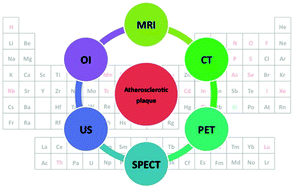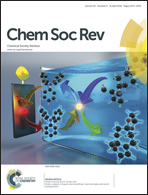Visualizing the atherosclerotic plaque: a chemical perspective
Abstract
Atherosclerosis is the major underlying pathologic cause of coronary artery disease. An early detection of the disease can prevent clinical sequellae such as angina, myocardial infarction, and stroke. The different imaging techniques employed to visualize the atherosclerotic plaque provide information of diagnostic and prognostic value. Furthermore, the use of contrast agents helps to improve signal-to-noise ratio providing better images. For nuclear imaging techniques and optical imaging these agents are absolutely necessary. We report on the different contrast agents that have been used, are used or may be used in future in animals, humans, or excised tissues for the distinct imaging modalities for atherosclerotic plaque imaging.


 Please wait while we load your content...
Please wait while we load your content...